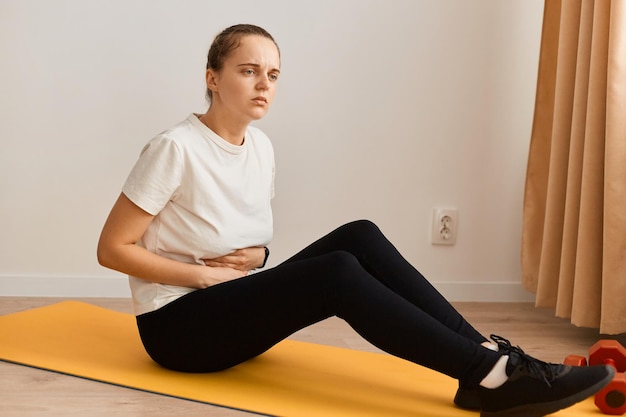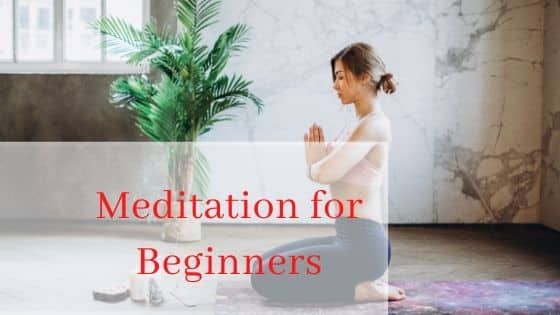
As you begin practicing yoga, you may wonder if your poses are correct. It is possible to worry about how you do a pose. This could make it difficult to practice yoga correctly. Instead of dwelling on how you look, think about building a strong body/mind connection. These tips can help you get the best poses possible and avoid discomfort during your practice.
Arrive early to maximize the benefits of your yoga classes. It can cause anxiety to rush into a class. New students frequently admit feeling nervous before their first yoga class. Anxiety and discomfort can be made worse by arriving late. It's important to arrive before the deadline. This will allow you time to settle in and use the toilet, as well as to adapt to the environment. Ask your teacher if there are any questions about how long it will last.

Prepare for your first yoga class. You should arrive early in order to secure a spot and to familiarize yourself with beginner-friendly poses. Do not eat a large meal before class as it can make your stomach feel bloated from all the movement. You should also avoid eating large meals in the days leading up to your class. You don't want to cause any discomfort by moving around a lot. You should consult your doctor if stomach discomfort is a concern.
Respect your teacher. Your yoga instructor is there to help you correct your postures. While it can be helpful to have hands-on guidance, each student is different and will have their own goals and abilities. A good way to handle this is to remember to have fun and laugh whenever you fall out of poses or get stuck in difficult poses. Don't be discouraged if a yoga teacher corrects your posture. It's part the process and it should be enjoyed.
Yoga classes can be intimidating to beginners. Learn what common poses are before you attend a class. You should not practice them until the names of each pose are known. It can cause confusion. Instead, you can look at pictures and read the names of the poses. Once you've figured out which poses are the most difficult you can decide which ones to attempt. Once you've found your own yoga sweet spot, you can move on to the next level.

It is important to recognize that yoga can be hard for beginners. Don't expect to master it right away. If you're new to yoga, it may take some time. You're learning a new skill. So be patient. Then, you'll be able to focus on the process. Yoga instructors can help you learn the skills required to run a successful yoga practice.
FAQ
What foods should I avoid when trying lose weight?
Avoid foods that contain trans fats. Trans fats increase LDL (the harmful) cholesterol and lower HDL (the good).
Trans fats may be found in deep-fried, fast food, packaged bake goods, snack cakes, or other processed food.
These unhealthy fats also cause inflammation, leading to heart disease and diabetes.
Avoid foods that are sweetened with artificial sweeteners. Artificial sweeteners increase the risk of getting cancer.
These chemicals are found in many products, including soft drinks, candy bars, chewing gum, as well as candy bars. They appear in many other foods, including meat, poultry, fish, and eggs.
Artificial sweeteners include saccharin and sorbitol.
These chemicals can damage DNA and cause cell death, according to the American Heart Association.
How to Get Rid of Belly Fat Fast
There are several methods to rapidly reduce belly fat. You can reduce your intake of food and drink more water.
Another way to increase metabolism is to run and swim.
You should avoid sitting for too long if you want to quickly lose belly fat. Instead, stand up frequently throughout the day. This will help you burn more calories.
There is an alternative option if you've tried all of these options and still have trouble losing belly fat.
A belt is a device that allows you to do this. It tightens around the waist when you sit.
You will feel more comfortable and be able to move around. This encourages you to burn calories and decrease your belly fat.
What is a good schedule for a 7-day work out?
A seven day exercise program should include cardiovascular training (running or biking), strength exercises (using freeweights, weight machines) and one flexibility/core workout. Each activity should be done at least once per week. Maximum 45 minutes should be allotted for each session.
Cardiovascular Exercises: Running, biking, swimming
It is important to complete at least 60 minutes of cardio per week. You can aim for 75 minutes a week for best results. Cardio exercise can improve blood flow and stimulate muscle development.
Strength Training
While cardio exercises target the heart and lungs, strength training targets the muscles and bones. Strength training increases lean muscle mass and helps to burn calories even at rest.
Flexibility and Core Workouts
Your whole body will be stronger if you have flexibility and core training. Both yoga as well as Pilates are great choices.
Can I go to a gym 7 days per week?
Yes, you could go to the gym seven days per semaine but not all at one time. It is important to find a time and place where you can exercise without feeling tired or exhausted.
This will keep you motivated and provide energy for other activities.
You must also ensure that you eat enough during these times. This will ensure that you aren't tired and slow when you go to the gym.
And lastly, you need to ensure that there isn't anything else competing for your time. For example, if you have children, you may want to avoid exercising on school nights as they will distract you from your workout.
What is the best exercise for men over 40 years old?
The best exercise for older men is one that gives them more energy, and increases their stamina.
It is important you remember that most people aged 40 and over experience a loss in testosterone. This results in lower sex drives.
However, this doesn't mean you cannot still enjoy physical activity. Research has shown that exercise regularly can increase testosterone in men.
You can improve your sexual performance by starting an aerobics program.
Is it true that overeating protein causes kidney stones?
Protein is important for maintaining healthy bones and tissue. However, too much protein can result in calcium excretion through the urine. This can lead to kidney stone formation.
It's important to note that not everyone gets kidney stones after eating more than 2 grams of protein per kilogram (2.2 pounds) of body weight. Some people can eat high amounts of protein without getting kidney stones.
Watching your sodium intake can help prevent kidney stones. Sodium regulates the body's water balance. Too much sodium can cause kidney stones.
You may also want to reduce your protein intake in the event of kidney stones. Protein accounts for about half the daily caloric requirement of most adults. Reduce your intake of protein and you will likely lose weight.
If you do decide to eat more protein, don't go overboard. You should aim to consume less than 20% of your total calories from protein.
Statistics
- 10 pounds in a month is likely during a lean bulking phase, especially for beginners. (muscleandstrength.com)
- Get free shipping and 25% off today. (healthline.com)
- The PRS enabled risk stratification for overall prostate cancer and lethal disease with a four-fold difference between men in the highest and lowest quartiles (HR, 4.32; 95% confidence interval [CI], 3.16-5.89). (pubmed.ncbi.nlm.nih.gov)
- An estimated calorie range for moderately active adult males falls between 2,200 to 2,800 calories per day, depending on age. (eatright.org)
- By John Thompson Take a whopping 38% off a set of PowerBlock Pros. (menshealth.com)
External Links
How To
What should my diet look like before I start a workout?
You need to eat less calories than you burn while exercising in order to lose weight. Also, you must eat all the nutrients.
This includes protein and carbohydrates as well as fats, vitamins, and minerals.
You can do this by eating smaller meals throughout your day instead of three large ones.
If you are too hungry when working out, you might not perform as well as if you had appropriately eaten beforehand.
You could try drinking water instead of energy drinks which contain caffeine and sugar. This will keep your body hydrated and energized.
You should ensure that you get enough fluids. Over-consuming water could cause your body to lose its electrolytes.
Your body needs electrolytes for proper functioning.
If you don't have access to water, you could drink sports drinks. They are rich in sodium, potassium, calcium and magnesium as well as other minerals.
These help replenish electrolytes lost through sweating. However, they still won't replace what you've lost from sweating.
A multivitamin pill can be taken if you worry about losing too much salt while exercising.
These contain extra vitamin B6 which helps regulate the amount of sodium in your body.
Supplements are not recommended if you don’t know the amount of salt in your food or beverages.
They aren’t regulated under the Food and Drug Administration.
One example is that some sports drinks contain more sodium.
Some sports drinks may even contain artificial sweeteners or preservatives. These may cause digestive problems.
Sea salt is an option if you don't want to eat too much salt.
It contains fewer chemicals that table salt.
Sea salt has a low level of iodine. It is an additional mineral required for healthy thyroid function.